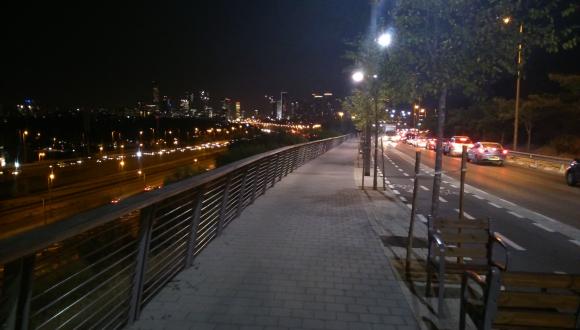The Challenges and The Opportunities
Why create an ecosystem for innovation
The Challenge: Cities at the Forefront of Climate Change
Climate change is happening in our time and its consequences are evident all over the planet. The release of carbon dioxide and other greenhouse gases into the air have been among the main causes of rising global temperatures, resulting in long-term climate change. The dangers arising from these changes are varied, including an increase in the frequency of extreme heat waves, damage to natural environments, a decrease in freshwater sources, damage to marine life and a decrease in food security. Climate Change and continual environmental degradation are impacting our present and certainly our future.
In the beginning of August 2021, the Inter-Governmental Climate Change Panel (IPCC), published the first part of the sixth report on climate change, presenting the current scientific assessment of the changes in progress. The report states that:
- Observed increases in well-mixed greenhouse gas (GHG) concentrations since around 1750 are unequivocally caused by human activities. Since 2011, concentrations have continued to increase in the atmosphere, reaching annual averages of 410 ppm for carbon dioxide (CO2), 1866 ppb for methane (CH4), and 332 ppb for nitrous oxide (N2O) in 2019.
- Each of the last four decades has been successively warmer than any decade that preceded it since 1850. Global surface temperature in the first two decades of the 21st century (2001-2020) was 0.99 [0.84- 1.10] °C higher than 1850-1900 (The period 1850–1900 represents the earliest period of sufficiently globally complete observations to estimate global surface temperature and, consistent with AR5 and SR1.5, is used as an approximation for pre-industrial conditions). Global surface temperature was 1.09 [0.95 to 1.20] °C higher in 2011– 2020 than 1850–1900.
- In order to ensure that the temperatures do not rise above 2o, by the end of the century, expansive global efforts are being made to transition into a carbon zero economy.
The slow progress of governments so far, means that a rise of 3o is still likely, unless severe measures are taken, in policy, in finance and in technology. While climate change impact affect the planet as a whole, it is cities who are at the forefront of the hazards.
The concentration of people and capital in cities renders them vulnerable (Mpanje, et. al., 2018). According to the UN World's Cities reports (2016, 2018), 59% of cities with at least 500,000 inhabitants were at risk of exposure to at least one of six types of natural disasters, (cyclones, floods, droughts, earthquakes, landslides and volcanic eruptions); 15% were vulnerable to two or more types of disasters. Floods were the most common potential natural disaster, followed by droughts and cyclones, all anticipated to increase in frequency and intensity due to climate change.
Image: Cities' risk of exposure to natural disaster (UN, 2018)
It is therefore not surprising that resilience has become a prerequisite for a successful city; urban wellbeing as defined by the SDG framework is Resilient, Sustainable and Equitable (SDG11).
Learn more: Climate Change Policy
The Opportunity: Innovative cities
The rise of tech startups in cities is driving economic growth and leading to new sources of employment, by creating new businesses and employment categories. While traditional manufacturing and low-skills jobs are being eroded, startups are a rapid and resilient job growth engine, with tech jobs growing on average 10% year on year worldwide. The creation of new sources of employment and growth is vital to maintain competitiveness, reduce poverty, and increase shared prosperity, well being and sustainability in cities.
However the growth of tech innovation and entrepreneurship is not equal in all cities. Some cities experience higher, faster, and more sustainable growth than others. Cities can drive specific directions and provide a fertile ground for experimentation led by private-public partnerships. Initiatives like Bloomberg CityLab or MIT LivingLab have provided a framework and capacity building for cities around the world to experiment. Some cities have invested resources in supporting innovation around themes which were part of their existing strengths or characteristics.
Networks are central to urban technology innovation ecosystems. They are the connectors which sustain the social network of the ecosystem and have the potential to boost the ecosystem’s growth by increasing the collisions that result from social connections. By being central to the ecosystem and these connections, networking assets play a critical role in the growth and success of urban technology innovation ecosystems.
Entrepreneurship flourishes in cities, where the majority of SMEs are created and grow. Cities offer not only business opportunities but also the combination of services, support and infrastructure that entrepreneurs need. City authorities – in partnership with local grassroots organizations, research and education centres, are well-placed to define the most appropriate strategies to create a favorable environment for creativity and innovation.
The most relevant implications for policy design and implementation are that technology innovation ecosystems in cities need to be understood as a community or combination of communities, and the focus of policies to support these ecosystems is the community within the city, and it is the city’s task to bring together the different partners.
Learn more: Innovation Ecosystems
| < Previous | Next > |


